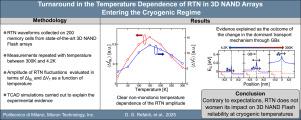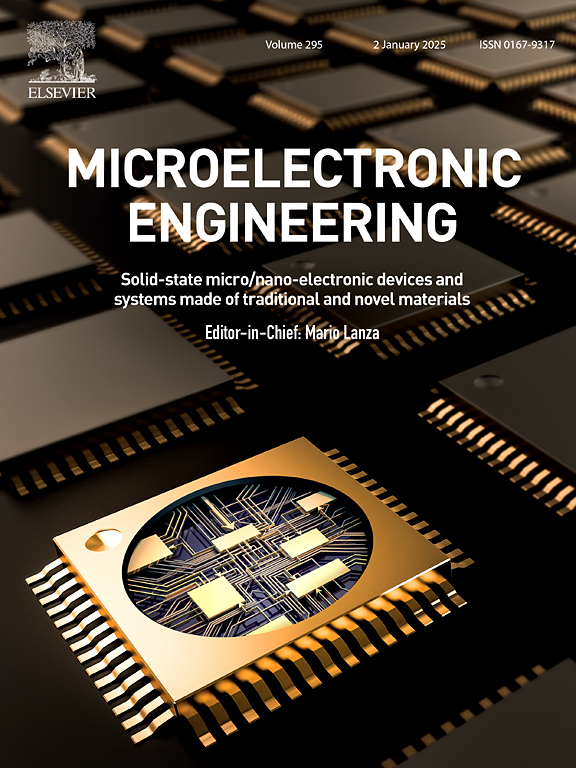在进入低温状态的3D nand阵列中,RTN的温度依赖性的转变
IF 3.1
4区 工程技术
Q2 ENGINEERING, ELECTRICAL & ELECTRONIC
引用次数: 0
摘要
在这封信中,我们报告了明确的实验证据,表明3D nand闪存中RTN的温度依赖性存在转变,当进入低温状态时出现。这种现象的起源可以追溯到通过记忆细胞多晶硅通道晶界的主要传输机制的变化,从热离子发射到量子力学隧穿。这一变化降低了晶界处微观缺陷的充放电对电池电流的影响,使得低温状态下的RTN比室温数据外推的预期要容易承受得多。本文章由计算机程序翻译,如有差异,请以英文原文为准。

Turnaround in the temperature dependence of RTN in 3D nand arrays entering the cryogenic regime
In this letter, we report clear experimental evidence of the existence of a turnaround in the temperature dependence of RTN in 3D nand Flash memories, showing up when entering the cryogenic regime. The origin of this phenomenology is traced back to the change of the dominant transport mechanism through the grain boundaries of the polysilicon channel of the memory cells, from thermionic emission to quantum-mechanical tunneling. This change decreases the impact of the charging/discharging of microscopic defects at the grain boundaries on cell current, making RTN in the cryogenic regime much more bearable than what expected from the extrapolation of room temperature data.
求助全文
通过发布文献求助,成功后即可免费获取论文全文。
去求助
来源期刊

Microelectronic Engineering
工程技术-工程:电子与电气
CiteScore
5.30
自引率
4.30%
发文量
131
审稿时长
29 days
期刊介绍:
Microelectronic Engineering is the premier nanoprocessing, and nanotechnology journal focusing on fabrication of electronic, photonic, bioelectronic, electromechanic and fluidic devices and systems, and their applications in the broad areas of electronics, photonics, energy, life sciences, and environment. It covers also the expanding interdisciplinary field of "more than Moore" and "beyond Moore" integrated nanoelectronics / photonics and micro-/nano-/bio-systems. Through its unique mixture of peer-reviewed articles, reviews, accelerated publications, short and Technical notes, and the latest research news on key developments, Microelectronic Engineering provides comprehensive coverage of this exciting, interdisciplinary and dynamic new field for researchers in academia and professionals in industry.
 求助内容:
求助内容: 应助结果提醒方式:
应助结果提醒方式:


